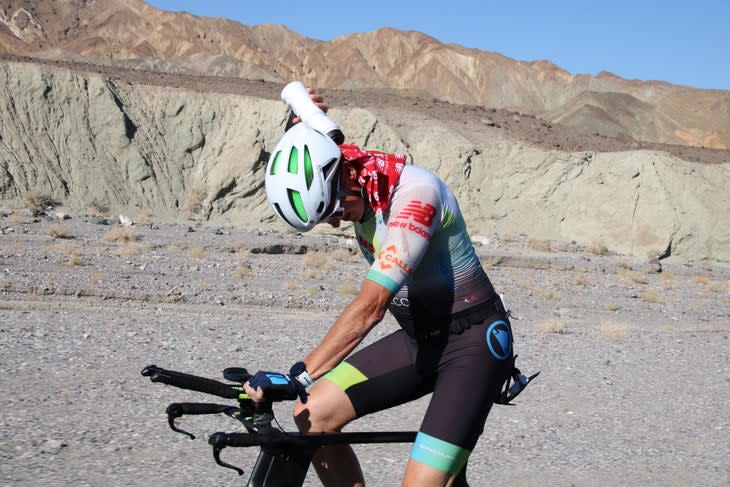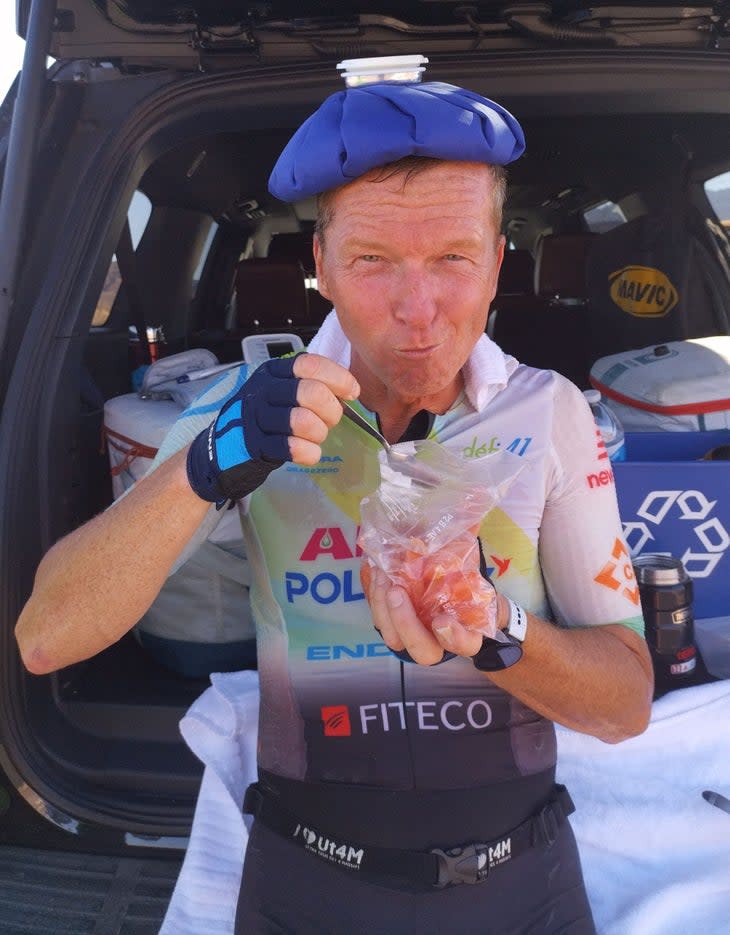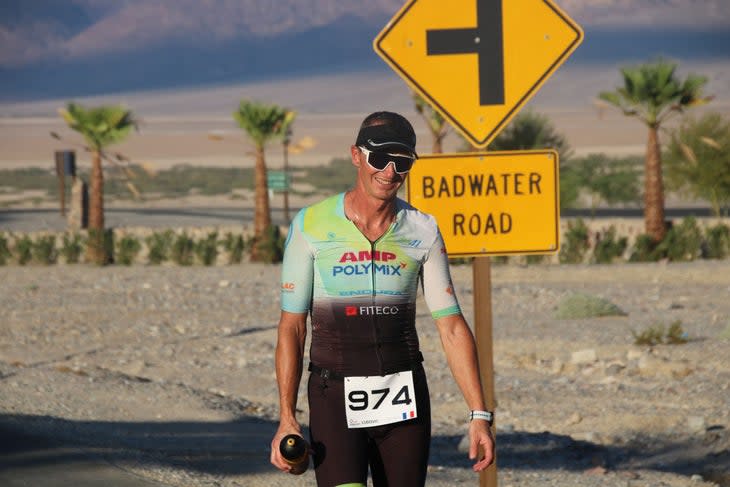Extreme French Triathlete Completes Iron-Distance in 130-Degree Temps
Triathlete
With a heat wave gripping much of the northern hemisphere, training for and racing triathlons has been decidedly challenging this summer.
But the heat hasn't bothered Ludovic Chorgnon of France. In fact, he craves it.
On July 12, the 50-year-old, who lives on Reunion Island off the coast of Madagascar, finished a self-staged, solo triathlon in California's dangerously hot Death Valley. With temperatures topping a thermometer-shattering 130 degrees F, Chorgnon completed the iron-distance--a 2.4 mile swim (3.9K), 112 mile bike (180.2K), and a 26.2 mile run (42.2K)--in a successful attempt to log the "world's hottest triathlon" for a Guinness World Record.
The event is just the latest in a string of Chorgnon's uber-extreme endurance stunts. "Iron Hot," as he dubbed the Death Valley feat, is part of his four-pronged quest to complete the world's hottest, coldest, and highest iron-distance events, as well as one with the greatest elevation gain. He's now completed three of the four, and he also holds Guinness World Records for the most Ironman distances completed on consecutive days (41) and the most Ironman distance races completed in one year (44).
Chorgnon's latest race was not your typical triathlon (nor was it particularly speedy). He began in the cover of darkness at 4 a.m., completing the swim in 1 hour and 13 minutes in a hotel pool with a water temp hovering around 90 degrees F. He then set off on a two-loop bike course winding through Badwater Basin, a vast, barren stretch of salt flat that's the lowest point in North America. As the temperatures climbed into the 120s and 130s, he took frequent stops to cool himself off with icy towels and douses of cold water over his head, ultimately covering the distance in 11 hours, 15 minutes.

And then, there was the run. As the streaming colors of the desert sunset faded and enveloped him in an inky night sky, Chorgnon jogged, walked, and took snack breaks (favoring fruit over any other fuel) and naps in his support car during the 26.2-mile journey. "The wind persists and makes the last stage...even more complicated," his small support crew wrote in an Instagram post, adding that the winds were gusting up to 28 mph at times. "The heat dries out the mucous membranes, tires the body, and gives a burning sensation with each breath." Later, Ludovic likened the feeling to "breathing with a hair dryer in your mouth."

Chorgnon was on the marathon course for 12 hours and 50 minutes. All told, 26 hours and 57 minutes elapsed from the time he jumped into the pool to when he crossed the "finish line," which his support crew had chalked on asphalt in a parking lot. But he still had energy to celebrate in the final stretches of the run--dancing to an upbeat French song blaring from the black SUV that had served as the support vehicle throughout the event, all while waving his country's flag above his head.
During the race, Chorgnon's team documented the effects the heat had on his body. His temperature rose to 107 degrees F at one point. He suffered from dehydration, heat stroke, and extreme cramping throughout his body ("…even on the shins, on the ribs, between the shoulder blades, under the arches of the feet, on the hands..." his support crew detailed.) They took video of his calf muscles pulsating beneath his skin as he lay, face down, an ice pack on his head, waiting for the spasms to stop. "He [was] in a very advanced state of dehydration," they posted.
Of course, extreme dehydration and heat stroke can also be exceptionally dangerous--and this is not the kind of thing we would advise anyone to take on without proper preparation and support.

Despite the beating on his body, Chorgnon later called the experience "magnificent," and is now back on Reunion Island, where he is taking a couple weeks of downtime before ramping his training back up for his next adventure--set for sometime within the next year. His plan? To complete the iron-distance in the thin air of Nepal at a lung-busting 14,000 feet above sea level.
RELATED: Hot Stuff: The History and Science of Heat Acclimation
For exclusive access to all of our fitness, gear, adventure, and travel stories, plus discounts on trips, events, and gear, sign up for Outside+ today.]]>

